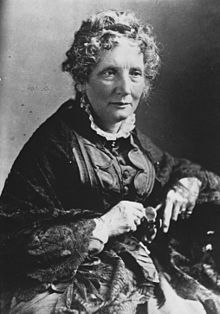 |
Sandy, a retired nurse, and her husband, Tracey, a retired lawyer, visited the International Centre in May while they were traveling in France. They were anxious to tell us about their work in Mandarin and its connection to the Sisters of St. Joseph.
Sandy is president of the Mandarin Museum and Historical Society (MMHS), which was founded in 1989 by a group of citizens interested in preserving and celebrating the rich heritage and history of the area. The group has created the Walter Jones Historical Park, which is comprised of old buildings that once serviced the northeastern Florida area.
 Sandy had recently discovered an old one-room schoolhouse that had been built by the St. Augustine Sisters of St. Joseph in 1898 for
African-American children. She brought it to the Walter Jones historical park in
2015. It opened in 2016 as a means of illustrating
the educational venues available in Florida during the late 19th century and in telling the story of the Sisters' contributions to education in Florida.
Sandy had recently discovered an old one-room schoolhouse that had been built by the St. Augustine Sisters of St. Joseph in 1898 for
African-American children. She brought it to the Walter Jones historical park in
2015. It opened in 2016 as a means of illustrating
the educational venues available in Florida during the late 19th century and in telling the story of the Sisters' contributions to education in Florida.  The Arpens talked about their contacts with Sister Thomas Joseph "TJ" Goldrick who wrote a history of the founding of the St. Augustine sisters in a book titled: Beyond the Call: The Legacy of the Sisters of St. Joseph of St. Augustine, Florida. The former mathematics teacher was asked by her superiors to write a history of the sisters. Although she claimed not to know how to write history, she did it anyway and published the book. She also became a source for a 2016 PBS documentary about the Florida sisters produced by WJCT in Jacksonville, FL, in honor of their 150 years of service of establishing free
schools, academies, founding orphanages, nursing victims of yellow
fever (1877, 1888), and teaching in public schools. The book illustrates how the original eight French sisters were Americanized, how the sisters dealt with bishops in
America, and how they were treated for teaching exiled Apache Indians and Black students.
The Arpens talked about their contacts with Sister Thomas Joseph "TJ" Goldrick who wrote a history of the founding of the St. Augustine sisters in a book titled: Beyond the Call: The Legacy of the Sisters of St. Joseph of St. Augustine, Florida. The former mathematics teacher was asked by her superiors to write a history of the sisters. Although she claimed not to know how to write history, she did it anyway and published the book. She also became a source for a 2016 PBS documentary about the Florida sisters produced by WJCT in Jacksonville, FL, in honor of their 150 years of service of establishing free
schools, academies, founding orphanages, nursing victims of yellow
fever (1877, 1888), and teaching in public schools. The book illustrates how the original eight French sisters were Americanized, how the sisters dealt with bishops in
America, and how they were treated for teaching exiled Apache Indians and Black students.  The
Arpens visited the Kitchen and the Living History Centre. Of
particular interest was the history of the founding of the St. Augustine
Sisters of St. Joseph, which is the only American foundation that came directly
from Le Puy.
The
Arpens visited the Kitchen and the Living History Centre. Of
particular interest was the history of the founding of the St. Augustine
Sisters of St. Joseph, which is the only American foundation that came directly
from Le Puy. Mandarin Museum and Historical Society (MMHS)
MMHS's first project was to preserve the Mandarin Post Office and Walter Jones General Store, which served as the heart of the community until it closed in 1964. In 1993, MMHS bought the Walter Jones homestead in order to create the 10-acre Walter Jones Historical Park. The park includes a farmhouse, barn, and outbuildings, as well as an interpretive reconstruction of the Mandarin boardwalk that was a fixture of community in the late 19th century and was opened to the public in 2000.
 Harriet Beecher Stowe, author of the influential anti-slavery novel, Uncle Tom's Cabin,
lived in Mandarin for 17 winters. She wrote sketches of life in
northeast Florida during the latter 19th century and compiled them in a
book titled Palmetto Leaves.
Harriet Beecher Stowe, author of the influential anti-slavery novel, Uncle Tom's Cabin,
lived in Mandarin for 17 winters. She wrote sketches of life in
northeast Florida during the latter 19th century and compiled them in a
book titled Palmetto Leaves.  Located on the eastern banks of the St. John's River, Mandarin was named after the mandarin oranges that once grew there. The small farming village started out growing oranges, grapefruits, lemons that were shipped north by steamboats. Orange groves covered the area until 1980 when a freeze destroyed the trees, and farmers decided not to replant them.
Located on the eastern banks of the St. John's River, Mandarin was named after the mandarin oranges that once grew there. The small farming village started out growing oranges, grapefruits, lemons that were shipped north by steamboats. Orange groves covered the area until 1980 when a freeze destroyed the trees, and farmers decided not to replant them. 




Hi Dear,
ReplyDeleteThanks for sharing such a useful blog. Really! This Blog is very informative for us which contains a lot of information about the to rent schoolhouse . I like this post. Please visit at "Schoolhouse historic venue ", I hope you may like our rent School ,
Visit Here - https://www.lillyschoolhouse.com/about/
Thanks